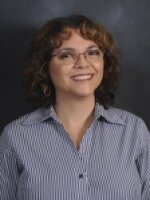In 2015, smoking among adults in Florida dropped to 15.8 percent, the lowest it has ever been. State health officials are celebrating the decline and giving much of the credit to passage of a constitutional amendment ten years ago.
In the late 1990's, Florida was one of just four states to craft its own multi-billion dollar settlement with the nation’s big tobacco companies. About a decade later, Florida voters approved a ballot measure mandating that the state use part of that money to provide a dedicated funding source for smoking prevention education.
“An amendment was passed in 2006, which assured that this program would receive 15% of the settlement dollars annually in Florida,” said Shannon Hughes, bureau chief for Tobacco Free Florida, which was creating with the money.
“So, we have very stable funding. And, we know through studies and research that the longer a program is stable with their funding, the more impactful it can be.”
Over the years, she says the money has been used in a number of ways, including various public awareness campaigns, such as the current “Quit Your Way” promotion.
Link to a series of public service announcements on the Tobacco Free Florida Facebook page.
“Quit Your Way” provides free patches, text messaging, emails, phone, group or web coaching, with more information at Tobacco-Free- Florida-dot-com.
To demonstrate the success of Tobacco Free Florida, in 2006, before the program was established, the state’s adult smoking rate was 21 percent.
Now the adult rate is at the all-time low of 15.8 percent.
There’s also been a steady decline in smoking among young people across Florida.
“In 2006, our youth smoking rate was 10.6 percent and it’s now 3 percent (a 71% decrease) here in 2016 across the state,” said Vanessa Phillips, a health education program manager and tobacco prevention program coordinator for the Florida Department of Health in Escambia County. “And high school is at its lowest point ever at 5.2% and that’s cut in half from 2012.”
The downward trend has also been reflected across the region. In Escambia County, the adult smoking rate in 2015 was 18.8 percent, down from 24 percent in 2007. It was also 18 percent in Okaloosa and Walton counties; 17 percent in Santa Rosa.
All are higher than the state rate. Phillips says they recognize there’s more work to be done, and in Escambia they’re using funds provided through Tobacco Free Florida to implement a variety of programs in order to reach out to people where they are.
“We work with local businesses to change their policies as far as wellness,” Phillips began, as she listed a number of initiatives to help people kick the habit. “Cessation programs have definitely increased. And, then we have free community cessation programs and we’re working with apartment buildings to ensure they have some kind of policy to where people don’t smoke on the inside, so that smoke is not carried from apartment to apartment.”
According to the CDC, studies have found that smoke free policies in the workplace have also helped to reduce smoking rates.
Locally, the University of West Florida, in August, became one of the latest entities to ban smoking on their campuses.
And, for many public and private employers, smoking is a factor in hiring, which is the point in the current Tobacco Free Florida “Quit Your Way” campaign in partnership with CareerSource Florida.
Smoke free policies have extended to area hospitals and public schools, too.
That brings us to youth smoking rates. In Escambia, the rate has come down to 5.7%, when it comes to kids who’ve ever smoked/and reported smoking with the last 30 days.
The youth smoking rate in Santa Rosa is at 4%, slightly higher than the incredible 3% state rate, but a definite decrease from 8% in 2012 and 6% in 2014.
Much of the credit here goes to Students Working Against Tobacco or SWAT.
“SWAT definitely makes a big impact on our youth smoking rates in Santa Rosa County and I would attribute that to part of the reason why our rates are so low,” said Gina Rosso, who is a health educator with DOH Santa Rosa and heads up the county’s SWAT program.
SWAT now has groups in six Santa Rosa schools, including Pace, Navarre and Milton high schools.
“We have over 150 active students across the county and a very active leadership board,” said Russo, adding that they also hold monthly campaigns within the schools, as well as community and different event outreaches throughout the year.
Most recently, SWAT students took part in this year’s Great American Smoke Out.
Despite their successes, Rosso says their efforts will continue, with more of a focus on E-Cigarettes and an ever-evolving range of flavored tobacco products aimed at youth.
Their latest concern is the Hookah.
“Hookah is a water pipe, where you smoke tobacco through the water pipe,” Russo said. “And, it’s pretty popular among the young adults and college age groups.”
Still, there’s reason to be optimistic. On the tenth anniversary of Floridians approving a constitutional amendment to create Tobacco Free Florida, the data proves the program is delivering in terms of saving lives and money.
The state has saved an estimated $17.7 billion in cumulative health care costs, and there are now approximately 451,000 fewer adult smokers in Florida than there was a decade ago.





